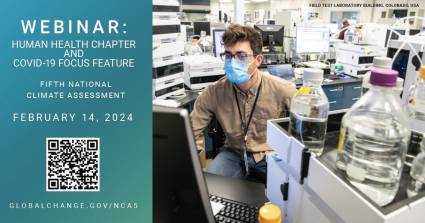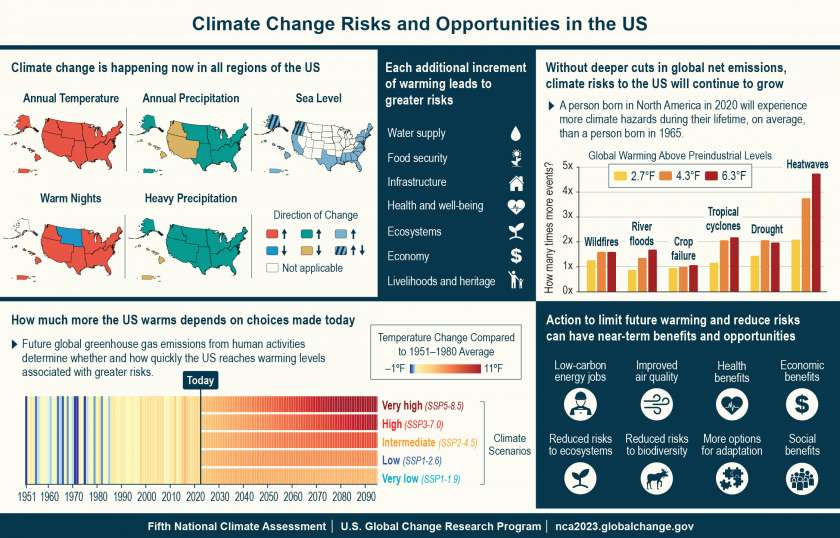HPOD Events
U.S. Government’s Fifth National Climate Assessment Highlights Outsize Climate Risks for Persons with Disabilities
Learn More at the Upcoming NCA5 Public Engagement Webinar on Human Health & COVID-19

The U.S. Government's 5th National Climate Assessment confronts the disproportionate effects of climate change on persons with disabilities with greater urgency than ever.
The U.S. government's Fifth National Climate Assessment (NCA5) documents observed and projected vulnerabilities, risks, and impacts associated with climate change across the United States. This Congressionally mandated report produced by the interagency U.S. Global Change Research Program (USGCRP) has documented climate change in the United States since 2000. While previous iterations of this report had largely overlooked persons with disabilities, thanks to timely submissions from HPOD Senior Associate, Penelope J.S. Stein, and Executive Director, Michael Ashley Stein, NCA5 confronts the disproportionate effects of climate change on persons with disabilities with greater urgency than ever.
Specifically, Chapter 15 of the NCA5, which addresses Human Health, zeroes in on the undeniable, disproportionate effects of climate change on persons with disabilities, among other marginalized groups, as :
It is an established fact that climate-related impacts disproportionately harm communities and people who have been marginalized. These include BIPOC (Black, Indigenous, and People of Color), individuals and communities with low wealth, women, people with disabilities or chronic diseases, sexual and gender minorities, and children.
The NCA5 also delves into the disproportionate effects of climate change on persons with disabilities much more comprehensively than any of the previously assessments.
During climate disasters, persons with disabilities are at heightened risk of mortality and injury, and they experience disruptions accessing assistive devices, medication, dialysis, other health services, and social support. During periods of higher ambient temperatures and heatwaves, persons with physical and mental disabilities experience adverse health impacts, increased emergency room visits, and higher rates of mortality; cooling measures may be physically or financially inaccessible. Persons with disabilities are also at elevated risk of exposure to chronic air pollution, as they disproportionately live in neighborhoods with heightened exposure to fine particulate matter due to lower wealth, higher unemployment, and undereducation relative to nondisabled peers.
This stark recognition represents a marked change from the Fourth National Climate Assessment, for example, which had recognized persons with disabilities only in passing, ensconced in a litany of other vulnerable groups:
Additional populations with increased health and social vulnerability typically have less access to information, resources, institutions, and other factors to prepare for and avoid the health risks of climate change. Some of these communities include poor people in high-income regions, minority groups, women, pregnant women, those experiencing discrimination, children under five, persons with physical and mental illness, persons with physical and cognitive disabilities, the homeless, those living alone, Indigenous people, people displaced because of weather and climate, the socially isolated, poorly planned communities, the disenfranchised, those with less access to healthcare, the uninsured and underinsured, those living in inadequate housing, and those with limited financial resources to rebound from disasters.
To learn more about how the NCA5 addresses the global climate crisis' implications for persons with disabilities and how it presents new opportunities to advocate for disability-inclusive climate action, register at the link above and tune into the USGCRP's webinar on February 14th from 3:00-4:30 P.M.





_70_70_60_s_c1.jpeg)